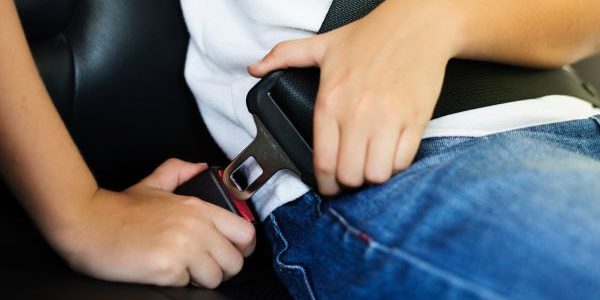Safety First
In the event of a collision, your airbag and seat belt work together to minimize injury. The airbag alone is not enough to prevent you from hitting the windshield or dashboard if you’re sitting in the front seat. Similarly, while a seat belt significantly reduces the risk of serious injury, it does not provide the cushioning effect needed to absorb impact forces in high-speed crashes. By working in conjunction, the seat belt keeps you securely in place, while the airbag reduces the force of impact. This protects your head, chest, and upper body from severe trauma.
Buckling your seat belt remains the single most important safety measure in a vehicle. But advancements in automotive technology have introduced a range of additional safety features designed to further protect you and your passengers. If you are considering purchasing a new vehicle, look for some of these advanced safety technologies.
Safety Features
- Airbags – Dual-stage front airbags have only been standard in cars since 2007. As of 2014, most new models come equipped with side airbags also.
- Antilock Brakes – Before this feature, front tires locked up with hard braking and made it impossible to steer the car. With ABS, there are sensors at each wheel to maximize braking action.
- Traction Control – This limits wheel spin when accelerating so the drive wheels have maximum traction. It’s especially useful on slippery surfaces.
- Electronic Stability Control – This system helps keep the vehicle on its intended path during a turn to avoid sliding or skidding.
- Brake Assist – This works in conjunction with anti-lock brakes, enabling threshold braking without locking up the wheels.
- Forward Collision Warning – FCW uses cameras, radar or laser (or some combination thereof) to scan for cars ahead and alert the driver if they are approaching a vehicle in their lane too fast.
- Pedestrian Detection – Some systems alert the driver with an audible or visual alert and some start automatic emergency braking if a collision is deemed high.
- Adaptive Cruise Control – Adaptive cruise uses lasers, radar, cameras, or a combination of these systems to keep a constant distance between you and the car ahead.
- Blind Spot Warning – This system illuminates a light or icon in or adjacent to the outside mirrors to warn that another vehicle is lurking in the lane beside you, possibly hidden in your car’s blind spot.
- Lane-departure warning – LDW alerts you if you steer your car out of its lane without the turn signals activated.
- Backup camera – Since 2018 models, all light-duty vehicles come with standard rear-view cameras. This system is activated when the vehicle is placed in reverse.
- Tire Pressure Monitors – This is a standard feature in all vehicles made after October 1, 2006. Underinflated tires can hurt handling and fuel economy.
Safe Driving Habits
Manufacturers add even more safety features to vehicles every year. But just because your vehicle has all the features doesn’t mean you can let your guard down. Always practice safe driving habits and avoid distractions such as phone use or eating.
In the event you do need repairs, call Sharp Auto Body at (847) 526-1343, a shop you can trust!








